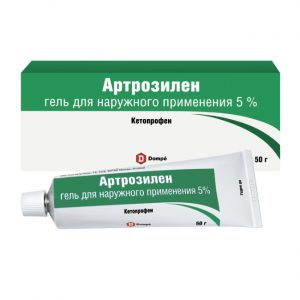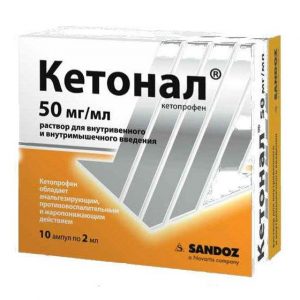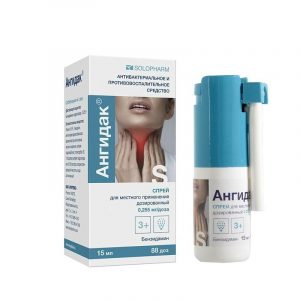Description
Release form
Granules for solution for oral administration
Pharmacological action
Pentaflucin daily is a combined drug.
Pharmacological effects are due to the complex effects of the components that make up the drug.
Paracetamol – has an antipyretic and analgesic effect, blocks the enzyme cyclooxygenase type 1 (COX-1) and the enzyme cyclooxygenase type 2 (COX-2) mainly in the central nervous system, affecting the centers of pain and thermoregulation.
Ascorbic acid – plays an important role in the regulation of redox processes, carbohydrate metabolism, blood coagulation, tissue regeneration, and increases the body’s resistance.
Caffeine – has a psychostimulating (stimulates the psychomotor centers of the brain), analeptic effect, enhances the analgesic effect of paracetamol eliminates drowsiness and fatigue, increases physical and mental performance.
Calcium gluconate – is a source of calcium in the body, has an anti-allergic effect (mechanism is unclear), prevents the development of increased permeability – and fragility of blood vessels, causing hemorrhagic processes in influenza and acute respiratory viral infection, and also restores capillary circulation.
Rutoside – reduces capillary permeability and fragility, has antioxidant properties.
Indications
Pentaflucin daily is used in adults for the symptomatic treatment of acute respiratory infections (ARI) and acute respiratory viral infections (SARS), accompanied by fever, chills, headache and muscle pain.
Contraindications
Hypersensitivity to the components of the drug.
Severe impaired liver or kidney function.
Diseases of the blood with a tendency to hemorrhage.
Deficiency of glucose-6-phosphate dehydrogenase.
Children’s age (up to 18 years).
Congenital intolerance to fructose, glucose-galactose malabsorption, sucrose-isomaltase deficiency.
Caution
With Gilbert’s syndrome (constitutional hyperbilirubinemia). The composition of the drug includes sugar (1 sachet contains 0.33 XE sugar), which should be considered for patients with diabetes mellitus.
Use during pregnancy and lactation
The use of the drug during pregnancy and during breastfeeding is contraindicated. If necessary, use the drug during lactation to stop breastfeeding for the entire period of treatment.
Special instructions
To avoid toxic liver damage, do not combine drug intake with alcoholic beverages.
During the treatment period, care must be taken when driving vehicles and engaging in potentially hazardous activities that require an increased concentration of attention and speed of psychomotor reactions.
Composition
1 sachet (5 g) contains:
Active ingredients: ascorbic acid – 0.2 g
calcium gluconate monohydrate – 0.2 g
caffeine (in terms of monohydrate) – 0.02 g
paracetamol – 0, 5 g
rutoside trihydrate – 0.02 g
Excipients: povidone (polyvinylpyrrolidone) – 0.0174 g sucrose (sugar) – 3.9426 g saccharin (soluble saccharin) – 0.050 g citric acid – 0.050 g
Dosage and administration
Pentaflucin daily is used orally after meals, 1 sachet 3-4 times a day for 3-5 days.
Dissolve the contents of one sachet in 1/2 cup (125 ml) of hot water (t = 70 ° C) and drink. A slight precipitate in a glass is allowed. Apply freshly prepared solution. Shake well before use.
Side effects of
Adverse reactions are rarely observed at the recommended dosage.
Occasionally, skin allergic reactions, nausea, vomiting, headache, general weakness, dizziness are possible.
Ascorbic acid
From the urinary system: moderate pollakiuria (when taking a dose of more than 600 mg / day), with prolonged use of large doses – hyperoxaluria, nephrolithiasis (from calcium oxalate), damage to the glomerular apparatus of the kidneys.
From the digestive system: irritation of the gastrointestinal mucosa.
Allergic reactions: skin rash, flushing of the skin.
Other: inhibition of the function of the insular apparatus of the pancreas (hyperglycemia, glucosuria).
Calcium gluconate
From the digestive system: constipation, irritation of the gastrointestinal mucosa.
Caffeine
From the nervous system: agitation, anxiety, tremor, anxiety, headache, dizziness, increased reflexes, tachypnea, insomnia.
From the cardiovascular system: palpitations, tachycardia, arrhythmias, increased blood pressure.
From the digestive system: nausea, vomiting, exacerbation of peptic ulcer.
Paracetamol
From the digestive system: nausea, epigastric pain.
From the hemopoietic system: anemia, thrombocytopenia, methemoglobinemia.
Allergic reactions: skin rash, itching, urticaria, angioedema.
With prolonged use in high doses, hepatotoxic and nephrotoxic effects are possible.
Rutoside
Allergic reactions: skin rash
From the digestive system: nausea, diarrhea, heartburn.
From the nervous system: headache.
From the side of the cardiovascular system: flushes of blood to the face.
If any of the side effects indicated in the instructions are aggravated, or you notice any other side effects not listed in the instructions, inform your doctor.
Drug Interactions
Avoid combination of the drug with barbiturates, anticonvulsants, phenytoin, carbamazepine, rifampicin, zidovudine and other inducers of microsomal liver enzymes.
Paracetamol: reduces the effectiveness of uricosuric drugs. The concomitant use of paracetamol in high doses increases the effect of anticoagulant drugs (decreased synthesis of procoagulant factors in the liver).
Ethanol contributes to the development of acute pancreatitis.
Prolonged concomitant use of paracetamol and other non-steroidal anti-inflammatory drugs increases the risk of developing analgesic nephropathy and renal papillary necrosis, the onset of end-stage renal failure.
Diflunisal increases the plasma concentration of paracetamol by 50% – the risk of hepatotoxicity.
Myelotoxic drugs increase the hematotoxicity of the drug.
Caffeine: with the combined use of caffeine with cimetidine, oral contraceptives, ciprofloxacin, norfloxacin – a decrease in the metabolism of caffeine in the liver (slowing its excretion and increasing blood concentration). Mexiletine – reduces the excretion of caffeine to 50% nicotine – increases the rate of excretion of caffeine.
Monoamine oxidase inhibitors, furazolidone, procarbazine and selegiline – large doses of caffeine can cause the development of dangerous cardiac arrhythmias or a pronounced increase in blood pressure.
Accelerates absorption and enhances the action of cardiac glycosides, increases their toxicity.
The combined use of caffeine with beta-blockers can lead to mutual suppression of therapeutic effects with adrenergic bronchodilator drugs – to additional stimulation of the central nervous system and other additive toxic effects.
Caffeine can decrease clearance of theophylline and, possibly, other xanthines, increasing the possibility of additive pharmacodynamic and toxic effects.
Ascorbic acid: increases the concentration of benzylpenicillin and tetracyclines in the blood.
At a dose of 1 g / day, the bioavailability of ethinyl estradiol (including that which is part of oral contraceptives) increases.
Reduces the effectiveness of heparin and indirect anticoagulants. It improves the absorption of iron preparations in the intestines (converts ferric to ferrous) and can increase iron excretion while used with deferoxamine.
Acetylsalicylic acid (ASA), oral contraceptives, fresh juices and alkaline drink reduce the absorption and absorption of ascorbic acid. ‘
With simultaneous use with ASA, urinary excretion of ascorbic acid increases and ASA excretion decreases. ASA reduces the absorption of ascorbic acid by about 30%.
Increases the risk of crystalluria in the treatment of short-acting salicylates and sulfanilamides, slows the excretion of acids by the kidneys, increases the excretion of drugs with an alkaline reaction (including alkaloids), reduces the concentration of oral contraceptives in the blood.
With simultaneous use, it reduces the chronotropic effect of isoprenaline.
Calcium gluconate: with simultaneous use with quinidine, intraventricular conduction may be slowed and quinidine toxicity may increase.
Forms insoluble complexes with tetracycline antibiotics (reduces antibacterial effect).
Slows down the absorption of tetracyclines, digoxin, oral iron preparations (the interval between their doses should be at least 2 hours).
When combined with thiazide diuretics, it can enhance hypercalcemia, reduce the effect of calcitonin in hypercalcemia. Reduces the bioavailability of phenytoin.
is pharmaceutically incompatible with carbonates, salicylates, sulfates (forms insoluble or sparingly soluble calcium salts).,
Reduces the effect of slow calcium channel blockers.
Rutoside: the pharmacological effect is enhanced by ascorbic acid.
Overdose
Symptoms (due to paracetamol): during the first 24 hours after administration – pallor of the skin, nausea, vomiting, anorexia, abdominal pain, impaired glucose metabolism, metabolic acidosis. Symptoms of impaired liver function may appear 12-48 hours after an overdose. In severe overdose – liver failure with progressive encephalopathy, coma, death acute renal failure with tubular necrosis (including in the absence of severe liver damage) arrhythmia, pancreatitis. Hepatotoxic effect in adults is manifested when taking 10 g or more.
Treatment: the victim should have a gastric lavage, prescribe adsorbents (activated charcoal) and consult a doctor.
Symptomatic therapy: administration of SH-group donors and precursors of glutathione synthesis – methionine within 8-9 hours after an overdose and acetylcysteine – within 8h. The need for additional therapeutic measures (further administration of methionine, iv administration of acetylcysteine) is determined depending on the concentration of paracetamol in the blood, as well as on the time elapsed after its administration.
Storage Conditions
Store the product out of the reach of children, in a dry, dark place at a temperature not exceeding 25 ° C.
Term hodnosty
2 years
Active ingredient
Ascorbic acid, Calcium gluconate, Caffeine, Paracetamol, Rutoside
Terms leave through pharmacies
without prescription
Appointment
Adult




